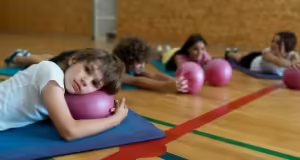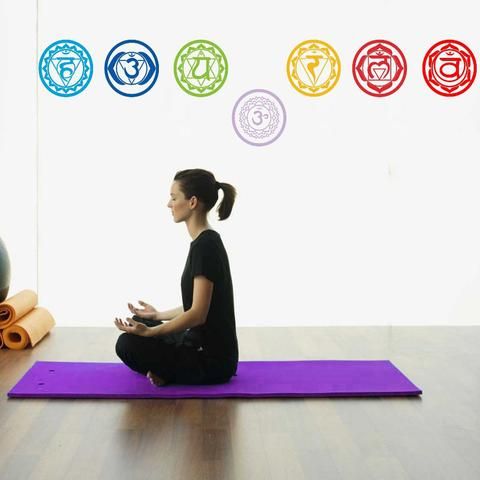
The Sanskrit word mudra translates as gesture or attitude. Mudra is also commonly translated as a seal. The roots in Sanskrit are Mud and Dru. Mud is enjoyment or pleasure, and Dru is extraction. The literal translation includes hand gestures but also includes drishti (focus points for the eyes), asanas (body postures), and pranayama (breathing techniques). So, see below mistakes to avoid when practicing finger mudras and how to do it properly.
What Is Finger Mudras for Chakra Healing?
Mudras have a very deep history and can be found in all cultures, including the ancient Egyptians, Romans, Greeks, Persians, Aborigines of Australia, ancient Indians, ancient Chinese, Africans, Turks, Fijians, Mayans, Inuits, Native Americans, etc. As you can see, the list includes many cultures with different languages, historical periods, and continents.
Because mudras have such a deep and extensive history, there are many theories about how and why they work.
Some of these theories include the influence of Ayurveda, chakras, acupressure points, reflex zones, meridians, planetary and palmistry. Various theories suggest that depending on where the pressure is applied to the hand, what energetic, emotional, and physical effect it will have on the practitioner.
You should appreciate this knowledge and use it as a basis for practice and reflection. Some things will resonate more than others and will be felt more than others. The practitioner must experiment to see what works best for him.
When performing a mudra, the pressure of the fingers engaged in the mudra should be very light but firm, and the rest of the fingers and hand should be relaxed. If practicing the mudra alone, without practicing asanas, it is recommended to begin with a few deep exhalations at the beginning. It is also recommended to pay attention to breath retention after inhalation and after exhalation.
How To Avoid Common Mistakes Of Finger Mudras for Chakra Healing:
Before performing the mudras, it is recommended to warm up the hands, wrists and shoulders. Most people, especially in the West, are not used to using their hands and wrists in this way and will experience fatigue without proper preparation and practice. This is equivalent to warming up the body before any exercise. Below is an example of a warm-up.
- Rub your palms together to create heat for ten seconds.
- With your right palm facing the sky with your wrist at a 90-degree angle, pull down each finger individually and hold for ten seconds, then move on to the next finger. When all the fingers of the right hand are ready, move on to the left hand.
- With your right palm facing the ground with your wrist at a 90-degree angle, pull each straight finger down individually and hold for ten seconds, then move on to the next finger. When all the fingers of your right hand are ready, move on to your left hand.
- Extend your arms out to the sides so that they are parallel to the ground with your palms facing up, bend your wrists so that your fingertips point toward the ground, and hold for ten seconds.
- Shake your hands vigorously for ten seconds.
- Hold the backs of your hands together in front of your heart center for ten seconds.
- Once you have warmed up and have gotten the energy flowing through your body, you can begin to perform the mudra you want.
Meditation Symbols & Their Meanings
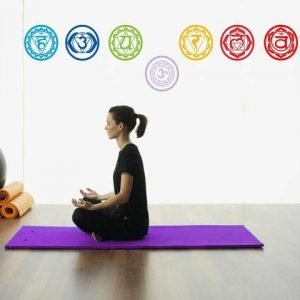
If you are wondering what are meditation symbols and what are they mean then you have come to the right place. As of today, I am going to discuss the symbols in meditation as well as their meanings in this article below:
Table of Contents
What Is Meditation Symbols?

Meditators use some visual images, words or mantras, or sensations and feelings (such as peace, love, and compassion) at the time of the spiritual training as a focus of their meditation. These are called Yoga Meditation Symbols. These Meditation symbols have different meanings and different types of meditation symbols are useful for different types of meditation purposes.
Thousands of centuries of spiritual training short-listed a figure of sacred meditation symbols that affect the meditator’s soul in a superior way when the practice extracts all responsiveness from the external world, and thus focuses on the mantra, feeling, or an image i.e. Meditation Symbols. So, let’s now know the different types of meditation symbols and their meanings.
What Are The Different Types Of Meditation Symbols And Their Meanings?
There are 7 different types of symbols for practicing meditation. So, let’s now know in detail about the 7 symbols of meditation in this article below:
- Aum / Om Meditation Symbols and Meanings
- Mandala Meditation Symbols
- Lotus Flower Meditation Symbols
- Hamsa / Evil Eye Meditation Symbols
- Namaste Meditation Symbol/Namaste Symbol
- Chakras Meditation Symbols
- Buddha Meditation Symbols
Aum / Om Meditation Symbols & Meaning:

Om / Aum is one of the most sacred and common symbols of meditation within diverse spiritual customs. The chanting of Om / Aum helps us to open the third eye and thus it connects to the divine and absolute force of this universe. This also permits us to alter into a more profound place inside and creates a vivid vision of reality, which lies beyond our conditioned awareness.
The Om / Aum symbol is useful for opening or closing meditation classes or yoga asanas. An influential method is to expend an intact meditation intonation Om / Aum out loud and then chant it mentally. The practice of this meditation will bring tranquility, bliss, and peace to you.
MEANING OF OM/AUM
‘Om’, ‘Aum’ or ‘Ohm’ is a blessed sound, which is generally familiar to the world as the sound of this universe. Aum/Om is all encircling, the spirit of ultimate truth, and it also unites everything in this universe.
Mandala Meditation Symbols & Meaning:

The exact meaning of the mandala symbol in the Sanskrit language is “Circle”, and it’s useful for representing the universe. It also represents the circle of our life as well as the patterns of nature.
In Meditation, the mandala signifies harmony and unity of our soul, body, and mind. A useful method is to hang or place a mandala in front of you & focus the eyes on the midpoint. This will help you to draw yourself deeper into meditation and concentration.
MEANING OF MANDALA
The meaning of Mandala Symbols is “A circular figure representing the universe in Buddhist and Hindu symbolism”.
Lotus Flower Meditation Symbols & Meaning:
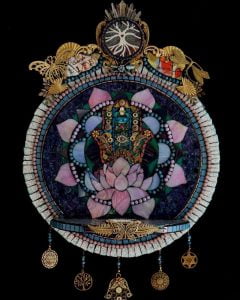
The customary symbol for meditation is habitually the water lily or lotus flower. Buddhists consider the Lotus petals to portray the opening of our hearts. The Lotus flower signifies our capability to come from the place of misery into the place of light, like the lotus flower, whose roots go into the mud-covered earth and then rise from the water i.e. from the dark to the sunlight.
This prompts us that also we can rise from several difficult situations and thus connect to the light, which surrounds us. This symbol is one of the greatest ways to meditate as this increases concentration.
MEANING OF LOTUS FLOWER SYMBOL
The Lotus flower symbol signifies the symbol of enlightenment, purity, rebirth, and self-regeneration in many nations, especially in the Eastern religions.
Hamsa Symbol / Evil Eye Symbol & Meaning:

The Evil Eye / Hamsa Meditation symbols are familiar to numerous traditions, together with Hinduism and yoga. The term “Hamsa” denotes the 5 fingers and thus the drawing of the right hand with an open palm represents this symbol. This symbol brings luck, protection, and strength.
Many individuals even chain it with the symbol of the Evil Eye to lessen the harmful effects. The evil eye signifies the threat of jealousy as well as malevolent stares, which can be very harmful to your health, prosperity, and property. You can wear the Hamsa / Evil Eye symbols as a talisman or you can also hang it above the front door of your house.
MEANING OF HAMSA/EVIL EYE IN MEDITATION PRACTICE
Hamsa is a talismanic symbol, which protects individuals from harms against the malevolent forces of the Universe.
Namaste Meditation Symbol & Meaning:

Namaste is usually used to greet practitioners to the course and thus conclude the practice. The Namaste symbol meaning represents salutation in prehistoric Sanskrit, which is still used in Nepal and India. Its symbol explains the divine spirit within us that greets and recognizes the divine spirit within us. You can also buy the Namaste wall sticker from here
MEANING OF NAMASTE
The sign Namaste denotes the belief that there’s a Divine inspiration within us that are situated in our heart chakra. This gesture is basically an acknowledgment of our soul.
Chakras Meditation Symbols & Meaning:
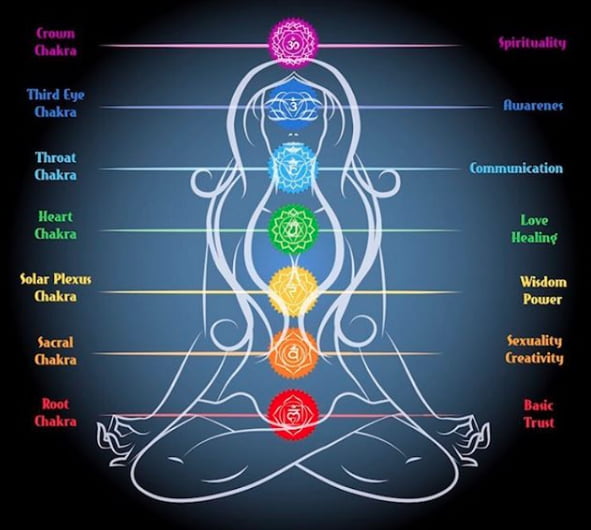
In our body, there is a total of 7 Chakras or wheels. Each of them has its meaning, responsibility, and significance for different mental, physical, spiritual, and emotional aspects. When a person explores the route of enlightenment, then the individual must balance those 7 chakras to achieve peace and harmony in their life. These chakras are
- Root Chakra
- Sacral Chakra
- Heart Chakra
- Solar Plexus Chakra
- Throat Chakra
- Crown Chakra
- Third Eye Chakra
MEANING OF CHAKRAS:
The “Chakras” literally means “wheels”. But, in meditation, chakras are the cores of our aura or the energetic body. Even simply concentrating on our chakra position as well as imagining its color helps us to activate and clear it.
Buddha Meditation Symbols & Meaning:

Buddha was a prince who left an extravagant lifestyle just to find out the root of the suffering of humans and thus he discovered the true implication of life. He is publicized in many poses that include meditation, bliss, protection, touching, and healing the globe.
It’s advised to take a second at the commencement of the meditation to visualize yourself as Buddha with his qualities such as compassion, enlightenment, and an open mind.
MEANING OF BUDDHA
The symbol “Buddha” basically means the “Awakened one” as well as it signifies the founder of the Buddhism, who was compassionate, enlightened and open.
Those individuals who practice meditation daily will feel the advantages of understanding the spiritual significance and meaning of these symbols to practice Meditation.
What Is Yoga Mudra?
In yoga, there are two types of postures. In the making of the mudra, the thumb is touched to the different fingertips. Yoga mudras formed by the touch of different fingers have different effects on the body. While some yoga Mudras are also made by turning the wrist.
Some yoga Mudras or postures also symbolize specific 5 elements in the body. In ancient belief, it is said that the body is made of five elements. Yoga postures make not only the body but also the mind healthy by activating those special elements.
5 Elements And Yoga Mudra:
Of the 5 elements, the first element in the human body is considered to be the air element. It is a symbol of human intelligence, creative thinking, and mental health in the human body. This element is related to the fourth chakra.
Whereas, the second element is considered akasha or space. This element is mostly considered inactive due to its massiveness. This element symbolizes the complete consciousness of the Yogi’s body. It helps to establish Yogi’s relationship with space. This element is considered to be related to the fifth chakra.
The third element is considered to be the earth element. This element controls the external or physical structure of the body. This element affects the tissues and bones of the body. This element also helps in controlling body odor. The earth element is considered to be related to the first chakra Muladhara and the third chakra Manipura.
The fourth element of the body is called the fire element. This element controls the growth, glands, metabolism, and temperature of the body. Earth and fire elements in the body are considered opposite to each other. They also have their distinct energy cycles.
Water is considered the fifth and last element of the body. 70% of the human body is made up of water. This is the reason why water element has the maximum effect on the body. This element affects tissues, joints, skin, skin, and taste. The water element is considered to be directly related to the second chakra of the body.
What Are The Mudras There And What Are Their Benefits?
There are a lot of mudras and these mudras have different benefits. So, let’s learn more about these yoga Mudras and their benefits below.
Prithvi Mudra:
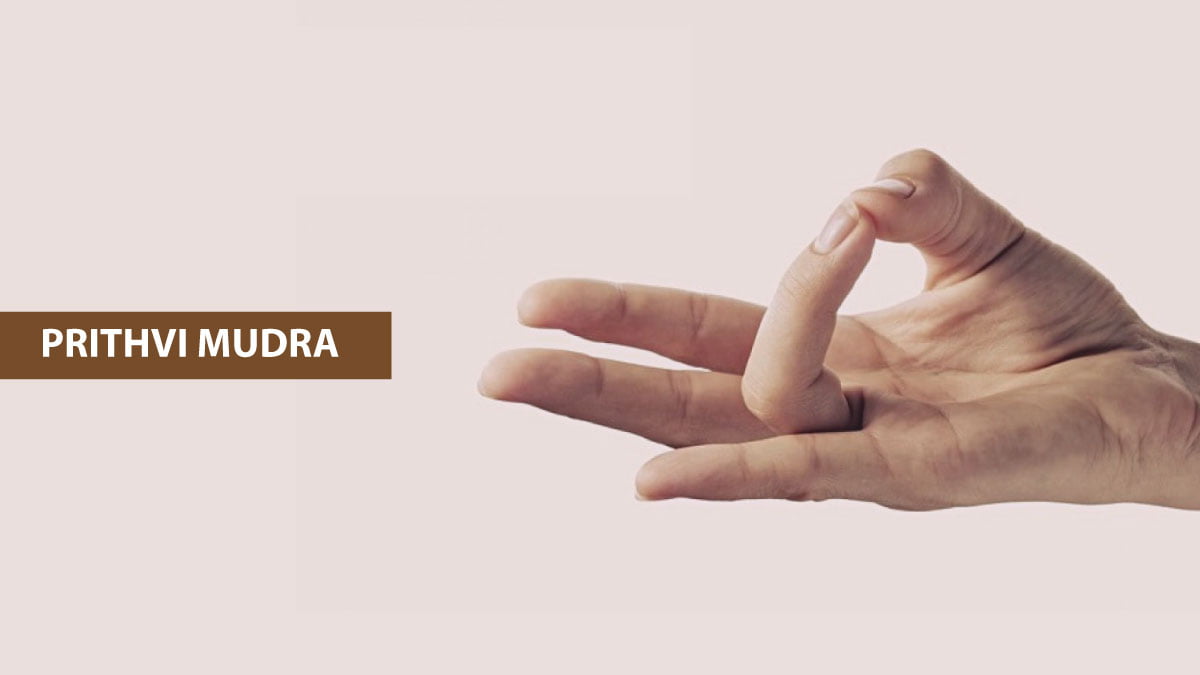
Purpose: To increase strength or power
Other names: Prithvi Vardhak Mudra or Agni Shamak Mudra.
Hasta Mudra: Touch the ring finger with the thumb.
Benefits of Prithvi Mudra:
- Increases new tissue growth.
- Accelerates the method of building & healing muscles
- Strengthens weak nails, bones, and hair
- Gives comfort from fatigue
- Regulates digestive or metabolic processes as well as body temperature
- Communicates consciousness, power, and strength in the body
- Removes the issue of burning, ulcers, or fever
- Removes the issue of dry skin
Aakash Mudra:
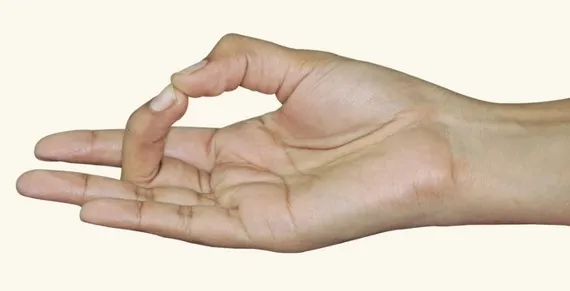
Purpose: for lightness
Other Names: Akash Vardhak Mudra
Hasta Mudra: Touch the tip of the middle finger with the thumb.
Benefits of Aakash Mudra:
- Provides relief from evil thoughts
- Controls the emotions of sadness, anger, and fear
- Detoxes the contaminants present in your body
- Particularly beneficial for individuals with digestive problems and constipation
- Also useful for ear & chest-related issues
Gyan Mudra:
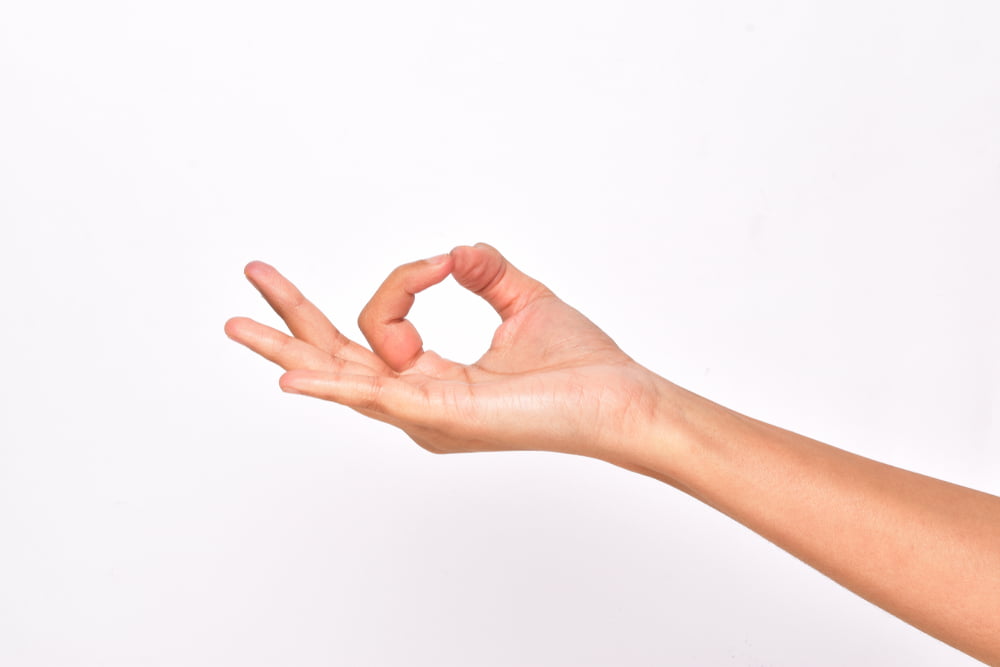
Purpose: This mudra should also be practiced by those yogis who want to detach themselves from this material world, to attain enlightenment.
Other Names: Vayu Vardhak Mudra
Hasta Mudra: Touch the index finger with the thumb.
Benefits of Gyan Mudra:
- Boosts courage, enthusiasm, and also creative thinking
- It’s very practical in dealing with laziness, fatigue, and also mental confusion.
- Improves the thinking ability and also memory of the subconscious mind.
Shunya Mudra:
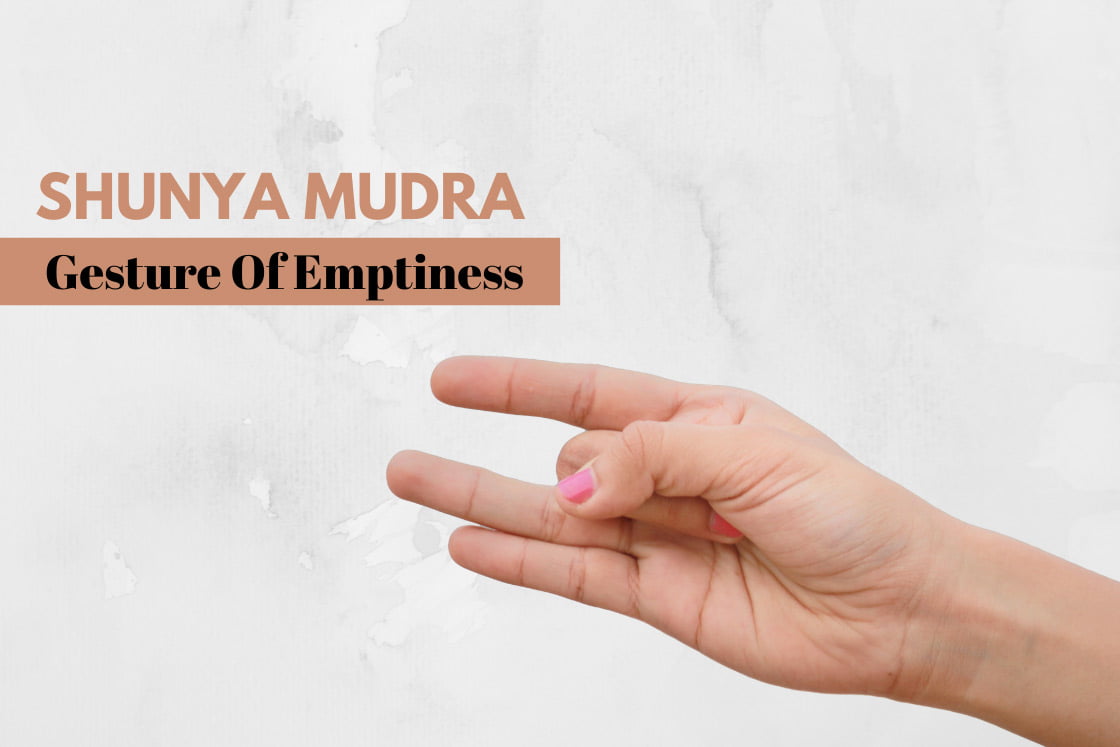
Purpose: To get relief from pain
Hand Mudra: Place the first knuckle of the middle finger on the base of the thumb and the thumb will be on top of the thumb. Do not practice Shoonya Mudra if you experience any kind of discomfort or pain.
Benefits of Shunya Mudra:
- Relieves hearing problems, ear pain, and also travel fatigue
- Extremely helpful for individuals with Vata nature
- Relieves mild pain in several parts of the body like the chest and head
Jal Shaamak Mudra:
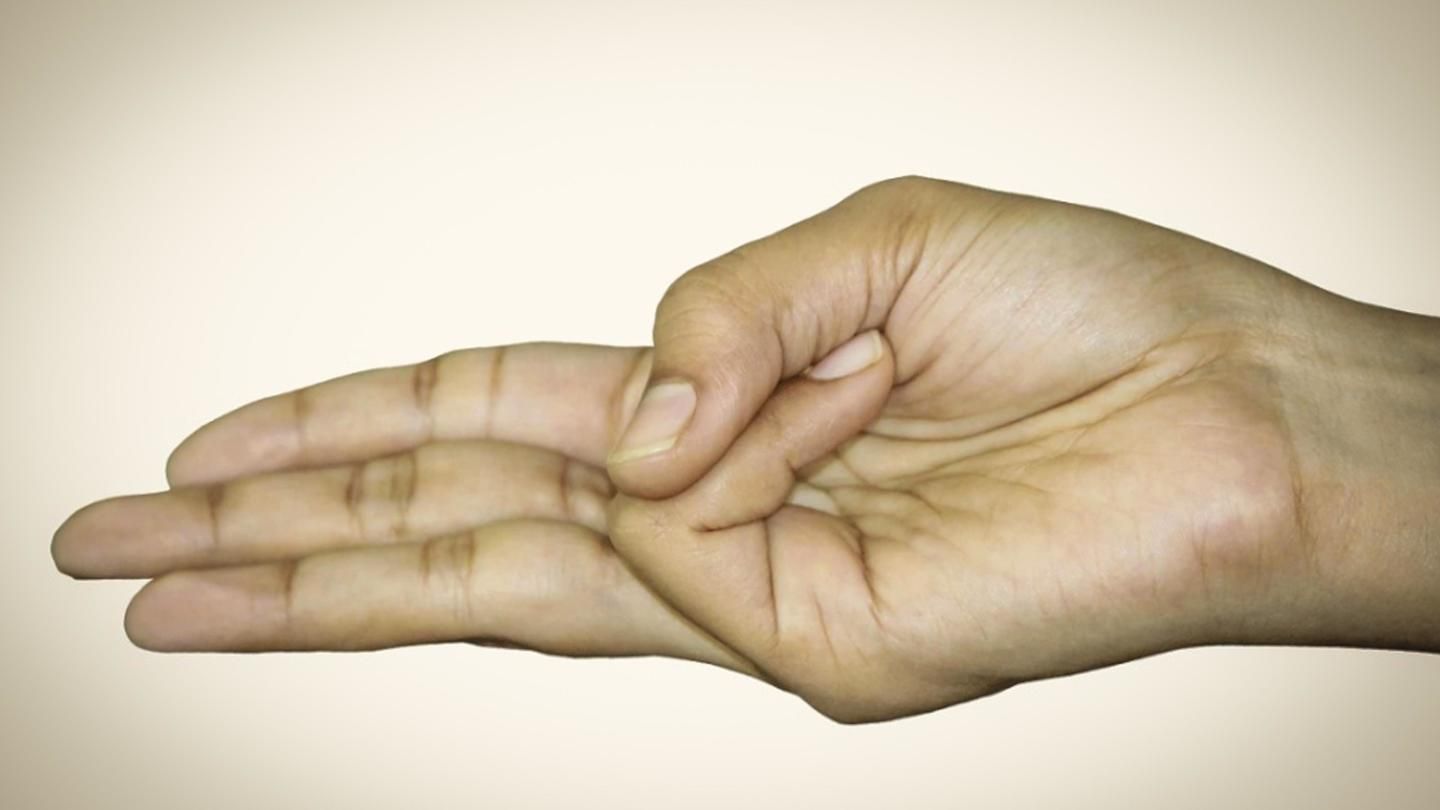
Purpose: For stability
Other Names: Water softener mudra
Hand Mudra: Place the first knuckle of the ring finger on the base of the thumb. The thumb will remain completely above the finger.
Benefits of Jal Shaamak Mudra:
- It’s effective in extreme running nose, sweating, and also watery eyes
- Best for many hyperacidity patients
- Gives comfort to the issue of sweating palms
- Reduces the secretion of hormones
Surya Mudra:
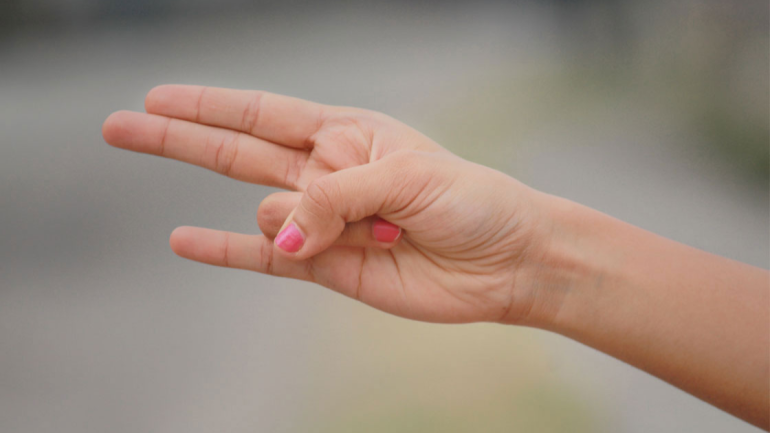
Purpose: For weight loss
Other Names: Prithvi Shamak Mudra, Agni Vardhak Mudra
Hand Mudra: Place the ring finger on the last knuckle of the thumb and place the thumb on top of the finger. Do not practice for more than 30 minutes.
Benefits of Surya Mudra:
- Increases body temperature
- Gives relief from shivering during cold
- Best for individuals with low thyroid issues
- Removes the issue of weight loss, constipation, indigestion, or even loss of appetite.
- Useful for individuals with problems with weak eyesight and not sweating.
Vaayu Mudra:
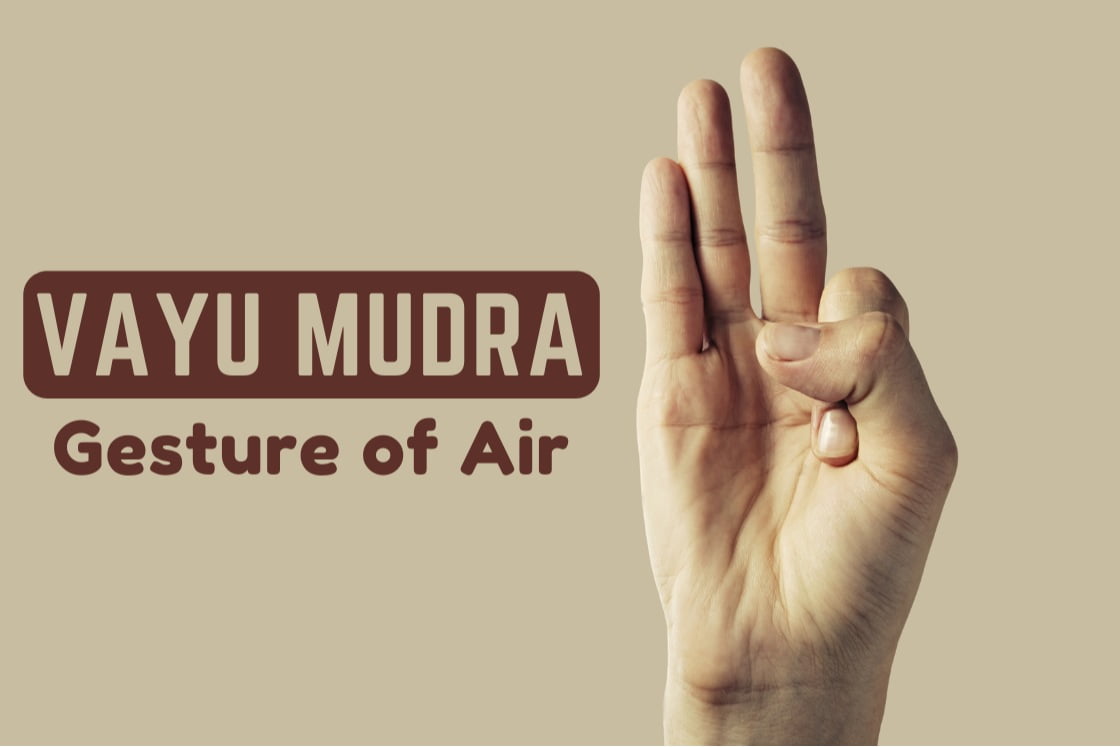
Purpose: To find peace
Other Names: Vayu Shamak Mudra
Hasta Mudra: Place the first knuckle of the index finger on the last knuckle of the thumb. The thumb will be on top of the index finger.
Benefits of Vayu Mudra:
- Reduces anxiety and restlessness
- Good for hyperactive, short-tempered, and also low-concentration individuals.
- Reduces hyperactivity of the nervous system and hormones.
Varun Mudra:
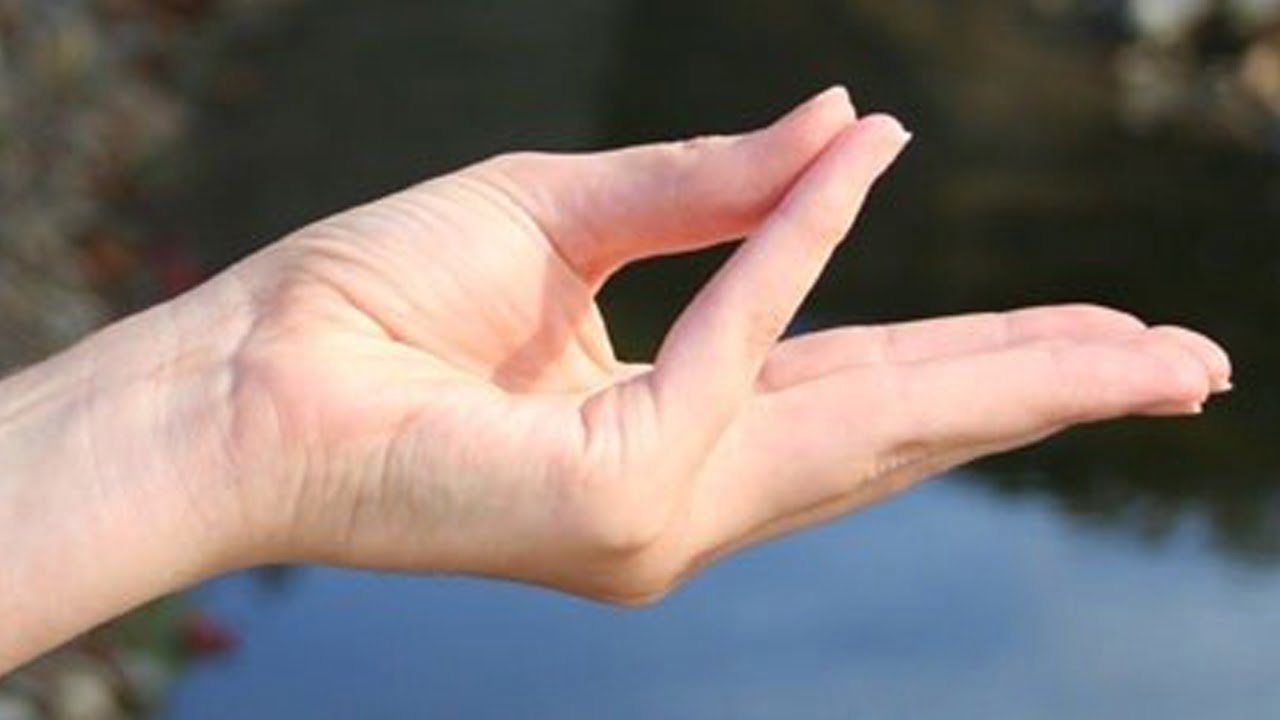
Purpose: For moisture
Other Names: Water-boosting mudra
Hasta Mudra: Touch the little finger with the first knuckle of the thumb. People having the problem of excessive sweating from the body should not practice this posture.
Benefits of Varun Mudra:
- Helps with arthritis, joint pain, loss of taste, and body odor.
- Gives relief from dehydration or hormonal deficiency.
- Removes all issues of eczema, dry skin, eyes, hair, and also the digestive system.
SUMMARY:
Symbols are an important aspect of the meditation tradition and are used in yoga practices. Although many meditation practitioners today ignore this component of meditation, vestiges of these symbols may still be found throughout the yoga experience.
Many Indian mystics have asserted that when one does yoga passionately and genuinely, one comes into contact with a variety of cosmic energies. Yoga symbols can help to facilitate and express this connection.
The symbols assist the meditation practitioner in gaining a direct connection to these forces, raising one’s awareness, developing good traits, and bringing greater meaning and understanding into one’s path. As a result, each practitioner must be familiar with some of these popular symbols and their spiritual meanings.
FAQ:
Q. What do Buddhist symbols represent?
A. Buddha symbol represents both the Buddha as the figure as well as the core principles of Buddhism as a philosophy. Many common yoga symbols define enlightenment which has incredible value in Buddhism.
The meanings of Buddhist symbols generally represent practices, and core beliefs, and are also meant to guide and remind people along the way of Buddhism and bring them to the spiritual world.
Q. What is the power of the Om mantra?
A. Om / Aum is one of the most sacred and common meditation symbols within diverse spiritual customs. The chanting of Om / Aum helps us to open the third eye and thus it connects to the divine and absolute force of this universe… Click here for more details”
Q. What do signs and symbols mean?
A. Meditators use some visual images, words or mantras, or sensations and feelings (such as peace, love, compassion) at the time of the spiritual training as a focus of their meditation… Know in detail”
Q. What is the Om symbol stand for?
A. The Om / Aum symbol is useful for opening or closing meditation classes or yoga asana. The practice of this meditation will bring tranquility, bliss, and peace to you… Click here for more”
Check Below the Different Types OF Meditation Yoga:-
- What Is Reiki Meditation & How Does It Work?
- What Is Kundalini Meditation & How Does It Work?
- Meditation Symbols & Their Meanings
- What Is Meditation Bell & What Are Its Functions?
- Does Meditation For Weight Loss Work?
- How To Do Transcendental Meditation Step By Step
- 5 Best Meditation Positions To Meditate?
- Different Buddhist Meditation Techniques
- Chakra Meditations: What Is It & How Does It Work?

